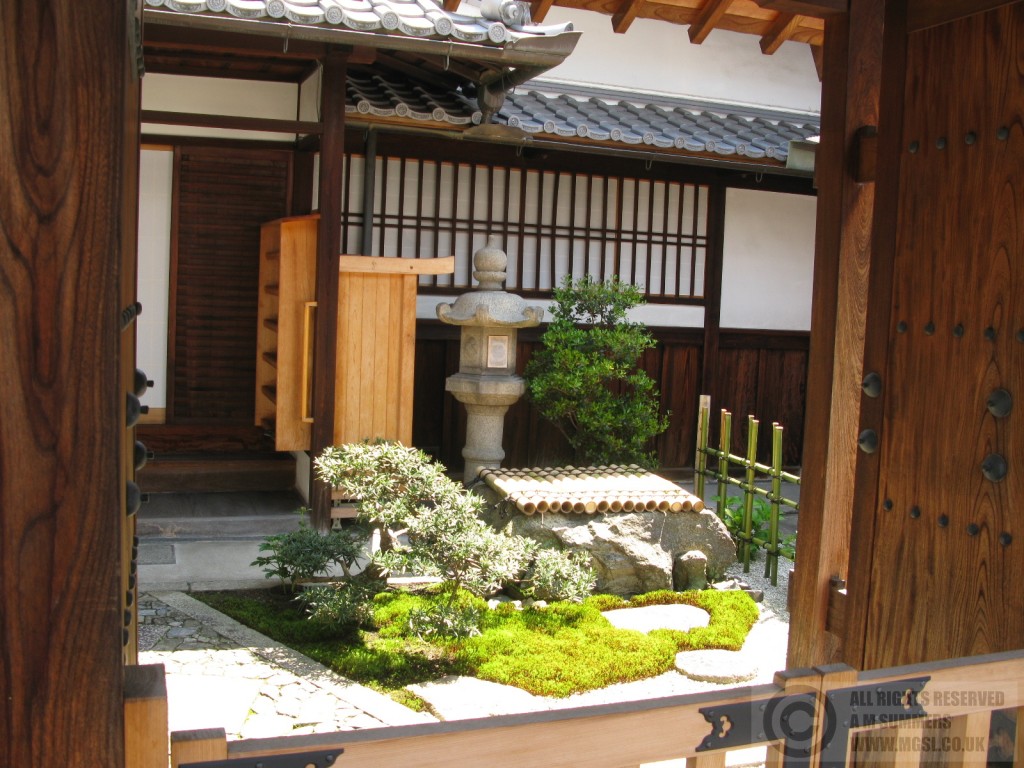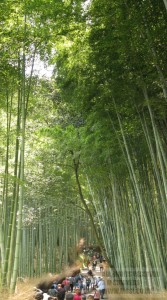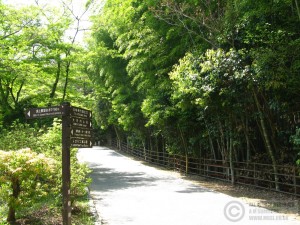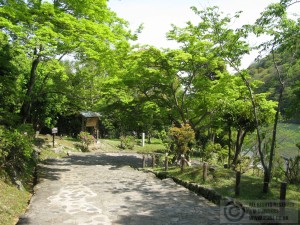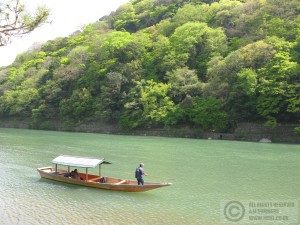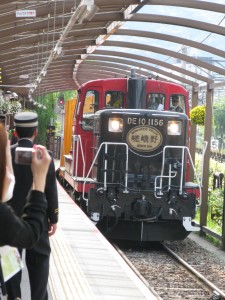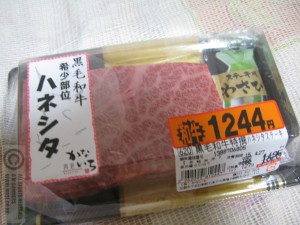It was so sunny and warm the next morning that I dug my sandals out of my backpack; they hadn’t seen daylight since Kuala Lumpur. From the station we took a suburban train to Arashimaya, just on the western edge of Kyoto. The big draw here is a bamboo grove, but there are also several important temples and the setting is lovely, on the banks of the Hozu River where it emerges from the hills.
It wasn’t hard to find the bamboo grove: we just followed the crowds. Even with so many people there was a sense of tranquillity from walking through the swaying bamboo that soars 100ft into the air, its leaves rustling and the stems knocking together in the breeze. Passing the Tenryuji Temple the path turned steeply uphill and the bamboo gave way to trees.
The way back to Arashimaya led along the hillside and down towards the river. It was just a perfect spring scene, the trees fresh green with a sprinkling of coppery maple, flowering bushes lining the path, and wooden pleasure boats being punted along the green river below. It reminded me how much I love spring, and how much I’d missed it last year.
- The path to the river
We wandered back towards the station past the daytripping school students, the lean, muscled, lycra-clad rickshaw pullers, and the souvenir and ice cream shops. We’d bought tickets for the 3pm departure of the Sagano Romantic Train as soon as we arrived in Arashimaya as it fills up quickly, and our reward for forward planning was a pair of seats in the coveted open carriage.
At first the best views were to the left, but the line soon crossed the river and then we benefitted from our position on the right hand side, as the line followed the stream up a steep sided valley. The hillsides were a patchwork of different greens with an occasional pale pink, feathery cherry. The scenery was stunning when it was visible, but we seemed to spend a large proportion of the 25 minute journey in tunnels. Finally we emerged from the hills onto an agricultural plain, where tractors lumbered around empty fields while green shoots sprouted from the light brown soil of others.
From the scenic train station we had to walk to the station on the modern line (the scenic railway was created when the line from Kameoka to Kyoto was modernised and straightened), and from there we caught a train all the way back to Kyoto. Mr Vagabond was still mulling over cameras so we called in to Bic Cameras (again) before heading towards home.
Our no-name supermarket had wagyu steaks nearing their sell-by date; only £6.50 for a reasonable sized piece of intriguingly marbled beef. To good an opportunity to miss – Fortnum & Mason’s sell Japanese wagyu for around £200 per kilo! So we picked up a little camembert as an equivalent treat for Mr V, a steak for me, and a bottle of red wine. The steak was astonishing – utterly unlike any I’d had before. My blunt little table knife cut straight through it with no more resistance than Mr V’s camembert, and chewing was barely necessary; it just disintegrated in my mouth. And this was just cheap wagyu ordinaire, not what the Japanese would call high quality. If you ever get the opportunity to try a real wagyu steak without taking out a 2nd mortgage, it’s well worth it. Unfortunately producers in the UK are allowed to call meat ‘wagyu’ when it’s actually from a cross breed, so be sure you’re getting the real deal!


